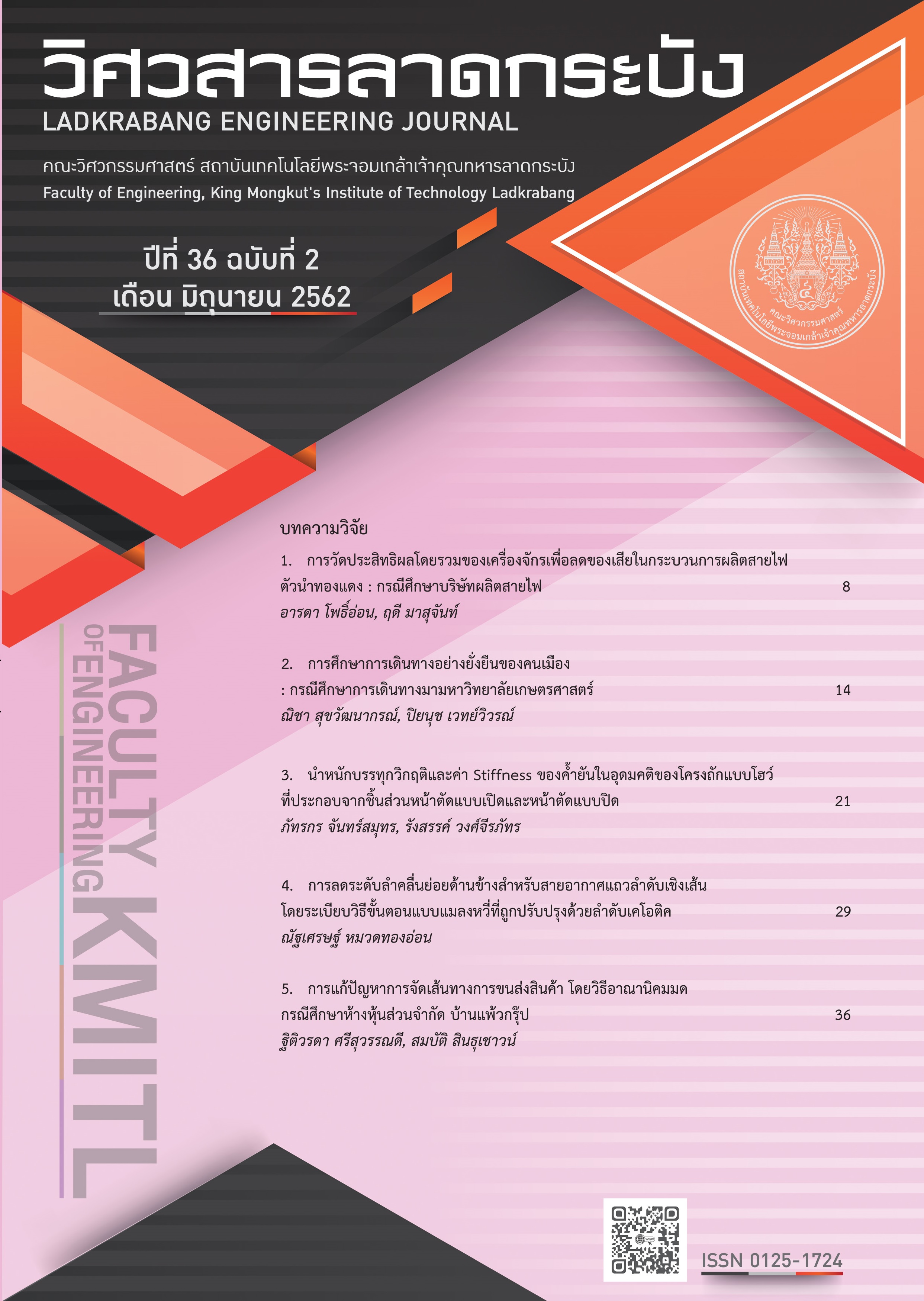Explore Sustainable Commuting of Urban People: Case Study of Traveling to Kasetsart University
Keywords:
Sustainable commuting, public transport, urban transportation, daily walking, daily cyclingAbstract
This research aims to explore sustainable commuting in Bangkok through case study of urban people who routinely commute to Kasetsart University. Data was collected from staff and students through online questionnaires. Total of 315 sets of data were analyzed using descriptive statistics and exploratory factor analysis. The result shows that there are 60 people traveling on foot and cycling (19.05%), 58 people traveling on foot or cycling together with public transport (18.41%) and the remaining 197 people (62.54%) travel in mixed mode with motor vehicles and private cars. The major reasons inhibiting these people to use sustainable commuting alternatives include 1) Insufficient good quality infrastructure to support walking and cycling. 2) Insufficient number of public buses and related facilities 3) Lack of confidence in safety of public vans, and 4) The price of BTS and MRT is too high for most people.
References
Damrongphon Chayaya. 2001. Passenger behavior and use of the Bangkok mass transit system in the Silom area. Master's thesis Chulalongkorn University.
Department of Transport. (2018). Department of Land Transport Reveal new car registration, January 2018, Web site:https://www.dlt.go.th/th/publicnews/view.php?_did=1954&source=post_page.
Evans, D., & Abrahamse, W. (2011). Beyond rhetoric: The possibilities of and for sustainable lifestyles. Environmental Politics, 18(4), 486–502.
Garrard, J. (2009) Active transport: children and young people. An overview of recent evidence. Victorian Health Promotion Foundation (VicHealth), Melbourne.
Geoff Rose. (2008) Encouraging Sustainable Campus Travel: Self-Reported Impacts of a University TravelSmart Initiative. Journal of Public Transportation, 11.
Grdzelishvili, I., and Sathre, R. Understanding the Urban Travel Attitudes and Behavior of Tbilisi Residents. Transport Policy 18 (2010): 38 – 45.
Halden, D. (2003) Barriers to Modal Shift. Scottish Executive Social Research: 171.
Pardo C, F. Training Course - 2nd Edition Public Awateness and Behavior Change in Sustainable Transport. Deutsche Gesellschaft Fur Technische Zusammenarbeit (GTZ). Division 44 Environment and Infrastructure Sector Project. Transport Policy Advice, 2006.
Phatthaphon Netpanya. (2005). The ability to access the mass transit station: a case study of people traveling to work in urban areas Bangkok. Thesis, Chulalongkorn University.
Transit Cooperative Research Program. Building Transit Ridership: An Exploration of Transit’s Market Share and the Public Policies that Influence it. TCRP Report 27.
Tya Smith et al. (2004). Active Commuting Study. Earth and Environment, the University of Western Australa.
Downloads
Published
How to Cite
Issue
Section
License
The published articles are copyrighted by the School of Engineering, King Mongkut's Institute of Technology Ladkrabang.
The statements contained in each article in this academic journal are the personal opinions of each author and are not related to King Mongkut's Institute of Technology Ladkrabang and other faculty members in the institute.
Responsibility for all elements of each article belongs to each author; If there are any mistakes, each author is solely responsible for his own articles.






